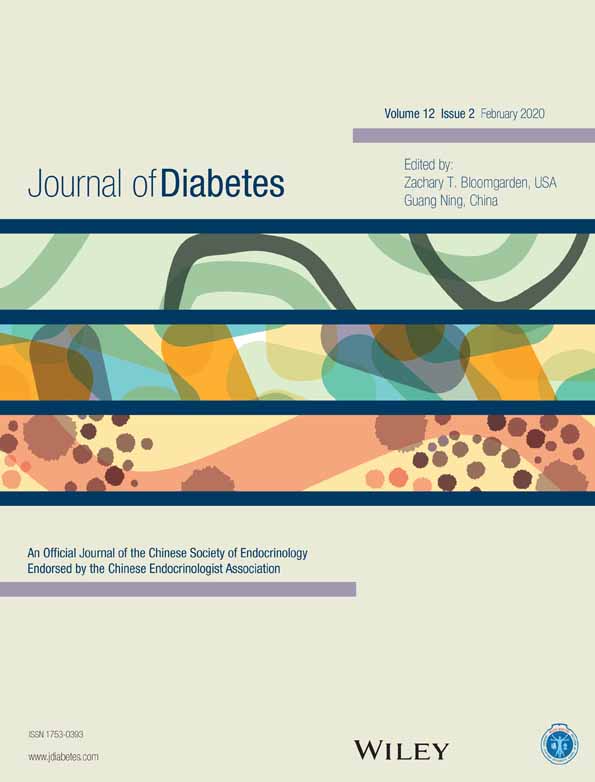The role of the kidney in cardiovascular disease
肾脏对心血管疾病的影响
Chronic kidney disease (CKD), defined by an estimated glomerular filtration rate (eGFR) < 60 mL/min/1.73 m2 and/or urine albumin-creatinine ratio (UACR) ≥ 30 mL, was added recently to the traditional risk factors for cardiovascular disease by the American College of Cardiology.
The incidence of CKD in the general US population over age 18, using data from the National Health and Nutrition Examination Survey, is estimated to be about 15% using eGFR <60 mL/min or micro-albuminuria (UACR >30 mg/ g).1 In type 2 diabetes (T2D) the CKD incidence is greater: for age > 21 and an eGFR 45-59 mL/ min,22%, and 30-44 mL, 9%, respectively.2
Medicare data from 2016 show the prevalence of any cardiovascular disease (CVD) to be at least double in people with CKD as compared to those without CKD.3 A large observational study by Kaiser Permanente of over 1.1 million patients followed for 2.84 years noted that CKD was a strong independent risk factor for coronary artery disease, congestive heart failure, cerebrovascular accident, atrial fibrillation, peripheral artery disease, and hospitalization for these conditions. Specifically in the general population the CVD risk was 2.11 events per 100 person-years compared with CKD 3a (eGFR 45-59 mL/ min) with 3.65, CKD 3b (eGFR 30-44) 11.29, and in CKD 4 (eGFR 15-29) 21.8.4
A meta-analysis found a linear relationship between CKD and CVD risk for an eGFR >60 mL /min under age 60; over age 60 it was linear only when creatinine and cystatin C are both used for eGFR estimation. The analysis concluded that CKD and albuminuria are CVD risk factors independent of hypertension, diabetes, or other comorbidities.5 Albuminuria (UACR>300 mg/g) is not only a risk factor for progression of CKD but also for CVD. Albuminuria and CKD independently are associated with increased all cause morbidity and mortality. Comparing an UACR of >10 mg/g with>30 and > 300 mg/ g increases CVD risk by 63% and 2.2-fold respectively. The same study compared an eGFR >95 mL/ min with an eGFR <60 noting an increased CVD risk of 23% and for <45 mL/min of 57%.6
Why CKD represents such a formidable CVD risk is not well understood. The list of presumed factors is extensive and includes oxidative stress, elevated asymmetric dimethylarginine (ADMA) with lower nitric oxide levels, endothelial dysfunction, oxidized low-density lipoprotein (LDL), anemia, abnormal mineral metabolism (calcium, phosphate, elevated parathyroid hormone levels [PTH], lower vitamin D levels), uremic toxins, and activation of the renin-angiotensin-aldosterone system and sympathetic system.
Obesity is associated with a 3.5-fold risk of CKD7 secondary to systemic factors (insulin resistance, hypertension, dyslipidemia, inflammatory state etc.) and local perirenal fat deposition in the hilum compressing the vascular bundle and sympathetic nerve supply as well as deposit of free fatty acids/triglycerides in the renal parenchyma (fatty kidney disease).8
Addressing the modification of CKD risks, renal guidelines from KDIGO (Kidney Disease Improving Global Outcomes) and other renal societies recommend controlling hypertension to a blood pressure of <130/80 mm Hg, AIC in T2D to <7.0%, LDL to <100 mg%, keeping Hgb between 10.5 and < 11.5 g, reducing salt intake to <5 g (2000 mg Na), and keeping HCO3 > 22 meq/L and potassium between 4.0 and 4.5 meq/L, phosphate <4.5 mg%. In addition a healthy lifestyle and diet with exercise, no smoking, and keeping a normal BMI are recommended.
Recently completed cardiovascular outcome trials for T2D revealed most encouraging renal data for GLP-1 agonists and sodium glucose transporter 2 (SGLT2) inhibitors. Trials of GLP-1 agonists lowered albuminuria (mostly with a baseline albumin >300 mg/g) by about 30%, showing no effect on eGFR. It should, however, be recognized that benefits of albuminuria reductions of >30% may become apparent with slowing CKD over a longer follow-up period.
A meta-analysis of completed trials of SGLT2 inhibitors (EMPA-REG, CANVAS, and DECLARE) showed a reduction of a renal composite endpoint (mostly doubling of creatinine, end-stage renal disease, or renal death) by about 40%.9 CREDENCE, a designated renal outcome trial for albuminuric diabetic kidney disease, with an average eGFR of 57 mL /min and albuminuria of about 1000 mg, showed a specified renal endpoint reduction of 34% in only 2.6 years.10
CONCLUSION
- Albuminuria and/or CKD (eGFR <60 mL/ min) predict CV morbidity, mortality, and renal outcome.
- CKD is a CVD risk factor independent of any other comorbidity or conventional risk factors.
- Albuminuria with a normal eGFR is a risk factor for renal function loss and CV events with or without diabetes.
- Reduction of albuminuria by 30% or greater irrespective of used drug reduces renal function loss by almost 30%.
ACKNOWLEDGEMENT
No funding received.
DISCLOSURE
None declared.
慢性肾脏病(chronic kidney disease,CKD)定义为估算的肾小球滤过率(estimated glomerular filtration rate,eGFR)<60 ml/min/1.73 m2和/或尿白蛋白-肌酐比值(urine albumin-creatinine ratio,UACR)≥30 mg/g,美国心脏病学会最近将CKD添加到心血管疾病(cardiovascular disease,CVD)的传统危险因素中。
根据美国全国健康与营养调查研究的数据,使用eGFR<60 ml/min/1.73 m2或微量白蛋白尿(UACR>30 mg/g)标准1,估计美国18岁以上普通人群的CKD发病率约为15%。在2型糖尿病患者中,CKD发生率更高:在年龄>21岁的患者中,eGFR为45-59 ml/min/1.73 m2和eGFR为30-44 ml/min/1.73 m2的患者的CKD发生率分别为22%和9%2。
2016年的医疗保险数据显示,与未合并CKD的患者相比,合并CKD患者的CVD患病率至少增加一倍3。Kaiser Permanente 对超过 110 万例患者进行的一项随访 2.84 年的大型观察性研究发现,CKD是冠状动脉疾病、充血性心力衰竭、脑血管意外、心房颤动、外周动脉疾病以及因这些疾病住院治疗的强烈独立风险因素。特别是在普通人群中,CVD风险为2.11起事件/100人-年,而合并CKD 3a(eGFR为45-59 ml/min/1.73 m2)、CKD 3b(eGFR为30-44 ml/min/1.73 m2)、CKD 4(eGFR为15-29 ml/min/1.73 m2)患者人群的CVD风险分别为3.65、11.29与21.8起事件/100人-年4。
一项meta分析发现60岁以下eGFR>60 ml/min/1.73 m2的患者中,CKD与CVD风险呈线性相关;而在60岁以上的患者中,仅当肌酐与胱抑素C均用于估算eGFR时才呈线性相关。这项分析得出了以下结论:CKD与白蛋白尿是CVD的危险因素,并且独立于高血压、糖尿病或者其他合并症5。蛋白尿(UACR>300 mg/g)不仅是CKD进展的危险因素,也是CVD的危险因素。白蛋白尿和CKD与全因发病率及死亡率增加独立相关。与UACR>10 mg/g相比,UACR>30及>300 mg/g的患者CVD风险分别增加63%与2.2倍。在同一项研究中,发现与eGFR>95 ml/min/1.73 m2的患者相比较,eGFR<60及<45 ml/min/1.73 m2的患者CVD风险分别增加23%与57%6。
目前还不是很明确为何CKD会导致如此巨大的CVD风险。推测可能与一系列广泛的因素有关,包括氧化应激、不对称二甲基精氨酸(ADMA)升高并且一氧化氮水平较低、内皮功能障碍、氧化型低密度脂蛋白(LDL)、贫血、矿物质代谢异常(钙、磷酸盐、甲状旁腺激素水平升高[PTH]、维生素D水平降低)、尿毒症毒素以及肾素-血管紧张素-醛固酮系统与交感神经系统的激活。
肥胖与CKD相关风险达到3.5倍7,仅次于全身因素(胰岛素抵抗、高血压、血脂异常、炎症状态等)和肾门局部肾周脂肪沉积压迫血管束和交感神经供应,以及肾实质内游离脂肪酸/甘油三酯沉积(脂肪性肾病)所导致的CKD风险8。
为了减少CKD风险,KDIGO(改善全球肾脏病预后组织)和其他肾病学会的肾脏病指南中建议将高血压患者的血压控制在<130/80 mmHg、将2型糖尿病患者的A1c控制在<7.0%、将LDL控制在<100 mg%、将Hgb维持在10.5至<11.5g之间、减少每日盐摄入量至<5 g(2000 mg钠)、将HCO3维持在>22 meq/L、将钾维持在4.0-4.5 meq/L之间、将磷酸盐维持在<4.5 mg%。此外,还推荐健康的生活方式和饮食与运动、不吸烟、保持正常的体重指数(body mass index,BMI)。
最近完成的2型糖尿病心血管结局试验显示,GLP-1受体激动剂与钠-葡萄糖协同转运蛋白2(sodium glucose transporter 2,SGLT2)抑制剂的肾脏结果令人备受鼓舞。GLP-1受体激动剂的试验结果显示其可使蛋白尿(主要是基线尿白蛋白>300 mg/g的患者)减少30%,但对eGFR无影响。然而,我们应该认识到,在较长时间的随访期内,蛋白尿减少>30%的获益可能随着CKD的减缓而变得更加明显。
针对已完成的SGLT2抑制剂试验(EMPA-REG、CANVAS以及DECLARE)的meta分析显示,肾脏复合终点(主要为肌酐倍增、终末期肾病、或者肾病死亡)大约减少了40%9。CREDENCE试验是一项针对合并蛋白尿的糖尿病肾病患者(基线平均eGFR为57 ml/min,蛋白尿约为1000 mg)的肾脏结局试验,结果显示仅经过2.6年就观察到特定肾脏终点降低了34%10。
结论
1. 白蛋白尿和/或CKD(eGFR<60 ml/min/1.73 m2)可预测心血管疾病的发生率、死亡率及肾脏结局。
2. CKD是独立于任何其他合并症或常规危险因素的 CVD 危险因素。
3. 无论是否合并糖尿病,eGFR正常的白蛋白尿均是肾功能丧失及心血管事件的危险因素。
4. 无论使用何种药物,蛋白尿减少30%或更多可使得肾功能丧失减少近30%。




